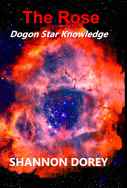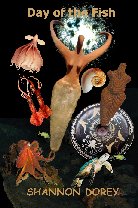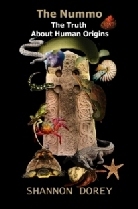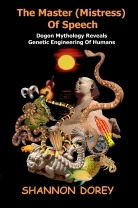(Updated 2020) Red Giant Suns, Cows and the Nummo by Shannon Dorey
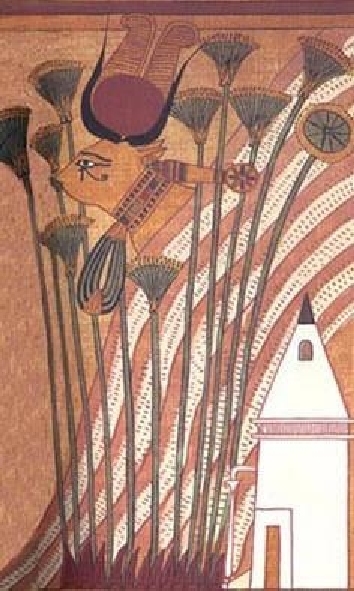 Cow Goddess Hathor with Red SunShannon Dorey, The Rose p. 373 |
The symbol of the cow as the divine feminine occurs in many different ancient cultures, including Egyptian. I believe this symbolism originated with the Dogon religion where the alien Nummo were symbolized by both a red giant sun and a cow.
In the Dogon language, the sun's name, nay, had the same etymology as mother, na, and cow, nã. In Egyptian mythology the goddess Hathor, shown above from the Papyrus of Ani, is depicted as a cow goddess with a red sun disk between her horns. The Nummo also had horns or casques on their heads.
The Dogon believed that red giant suns, which symbolized the Nummo, were pregnant suns.Shannon Dorey, The Rose p. 8 In astrophysics large red giant suns explode as supernovae to give birth to new stars and planets.
In their star form, the Nummo were depicted using a red, round calabash and they were described as glistening and glowing in a ball of red light.Shannon Dorey, The Rose pp. 374-375 The Dogon people described the red calabash as prefiguring "the 'matrix', where the world was formed."
Because of this red giant star association, the Nummo were considered the mothers of humanity, the Earth, and the galaxy.Shannon Dorey, The Rose p. 20 This picture of Hathor shows a trail of stars and white lines, which I believe are being associated with the Milky Way Galaxy.Shannon Dorey, The Rose p. 374
A temple to Menat (an early Hathor) at Thebes was oriented with reference to Spica when it was built in 3200 BCE. This is important because Spica is one of the nearest stars to the Sun that has enough mass to end its life in a Type II supernova explosion.Shannon Dorey, The Rose p. 252 The Dogon associated this destruction with a regeneration and the return of our second Sun.Shannon Dorey, The Rose p. 250-251 According to NASA, our Sun is unusual in that it is alone as most stars (suns) in the universe do occur in multiple or binary star systems. The sun duality was tied to our immortality.Shannon Dorey, The Rose p. 11
Spica, which is found in the constellation of the Virgin, shone the brightest of the stars during the early Easter festivals. The star Spica may have been the star Pelu that the Dogon identified with the celestial evidence of the resurrection and the regeneration.Shannon Dorey, The Rose p. 253
The Uraeus, which is an Egyptian cobra, asp, serpent or snake, and which signified divine authority, often appeared on the headdress of Hathor together with the sun disk. The Uraeus was a symbol that originated with an earlier Egyptian goddess, Wadjet, who was known as the green one. The alien Nummo were also green and were referred to as serpents.Shannon Dorey, The Rose pp. 374-375
Wadjet was one of the earliest Egyptian deities and was often depicted as a cobra.Shannon Dorey, The Rose pp. 374-375 "The Serpent" was how the Dogon elder Ogotemmêli most often referred to the Nummo. The Nummo were amphibious beings with long fish tails and when they were on land they stood upright on their tails, making them appear as serpents, and associating them with the Cobra of Egyptian mythology.Shannon Dorey, Day of the Fish, pp. 28-29
Hathor was the daughter of Ra, the sun-god, and later, primarily because of the cow's horns and sun-disk, became identified with Isis, who was associated with the constellation Sirius.
The Sirius star system was important to the Dogon people because the main star Sirius was a symbol of the alien Nummo and Sirius B, a white dwarf star, was associated with our lost sun. Isis was also known as "the cow of heaven."Shannon Dorey, The Master (Mistress) of Speech p. 51 Isis was shown on ancient artifacts with a snake's tail, also associating her with the serpent-like aspect of the Nummo.
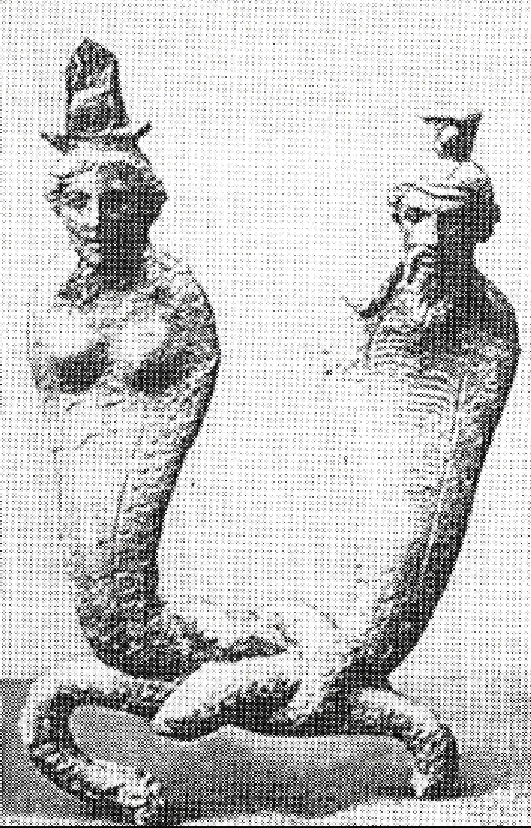 Isis as a Serpent with CasqueShannon Dorey, The Master (Mistress) of Speechp. 51 |
This image shows the goddess Isis and the god Serapis depicted as snakes. Isis also has a casque like object on her head and the alien Nummo also had casques or horns.Shannon Dorey, The Master (Mistress) of Speech, pp. 51-52
The Egyptian goddess Neith was considered an earlier form of the goddess Isis, and she also has Nummo-like characteristics. In quoting the coronation speech of Nectanebo III, the last native Pharaoh of Egypt, Margaret Murray reported that the reason the temple of Neith had been so endowed was because "Neith was the mistress of the ocean, and it was she who bestowed its bounty." The alien Nummo and the first Nummo/human offspring, of whom the Master (Mistress) of Speech was one, were amphibians but spent most of their time in water.Shannon Dorey, The Master (Mistress) of Speech, pp. 51-52
According to Kenneth McLeish, Neith was identified with weaving. He speculated that this aspect derived from the ideogram of her name, Neit, which looks like a shuttle. In the Dogon religion, weaving was identified with the androgynous and immortal Master (Mistress) of Speech, who had the perfect combination of human and Nummo DNA. She had a fish or serpent-like tail like the alien Nummo but had a human upper body.Shannon Dorey, The Master (Mistress) of Speech pp.50-51
Weaving was a metaphor for the Master (Mistress) of Speech's DNA being woven into the genetic fabric of humanity. Neith's connection to the shuttle may thus relate her to this Dogon figure, who was the saviour of humanity.
Katherine Griffis-Greenberg writes that Neith was an androgynous being often referred to in Egyptian texts as the "eldest," the "first" deity, and associated with the "cow of heaven." She quotes Ludwig Keimer, who suggests that the "shield" of Neith was the hindquarters of the beetle particular to Neith, the Agrypnus notodonta LATR, or "click beetle." Griffis-Greenberg also quotes Hollis, who pointed out that the self-generating qualities of the click beetle were the reason for its association with Neith.
The alien Nummo and the Master (Mistress) of Speech were self-fertilizing hermaphrodites, making this association of Neith to the click beetle relevant.Shannon Dorey, The Master (Mistress) of Speech pp.50-51
Griffis-Greenberg also quotes Ramadan el-Sayed, who hypothesizes that Neith "should be seen as a feminine doublet of Wepwawet, the ancient jackal-god of Upper Egypt, who was associated with both royalty in victory and as a psychopomp for the dead." Anubis was the "jackal-headed funerary god of Egypt before the rise of Osiris, the other great god of the dead." He was considered the chief deity to whom mortuary prayers were to be made and acted as the patron of embalming and guardian of the tomb.
My research reveals that Anubis, the jackal-god of ancient Egypt, was likely the same Jackal described by Ogotemmêli. Ogotemmêli related the Jackal to death. His roof dance prefigured funeral rites.Shannon Dorey, The Master (Mistress) of Speech pp.50-51
The Jackal symbolized the failed experiment on Earth. He was born mortal and single sexed in comparison to his sister, the Master (Mistress) of Speech, who was born an immortal hermaphrodite. The Jackal also had two serpent-like legs in comparison to her single serpent or fish tail. Because he wasn't able to fertilize himself, the Jackal was considered impotent. He was symbolized by the white dwarf star Sirius B.
In Egyptian mythology, Apis is the calf of a cow incapable of conceiving another offspring. This would associate the Apis Bull with the Jackal, who was considered impotent because he wasn't able to fertilize himself.Shannon Dorey, The Master (Mistress) of Speech p. 212
Because the Nummo were hermaphrodites, they were identified as twins. According to the French anthropologist, Marcel Griaule, at the time he was recording the religion during the 1930s and 40s, the celebration of twin births was a cult that extended all over Africa.Shannon Dorey, Day of the Fish, p. 116
Griaule described what transpired when twin cows were born in the Dogon village in Mendêli. There was great excitement in the village as the news spread rapidly from village to village.
The birth of twin calves was more significant than most twin births because of cows symbolizing the alien Nummo. Because the Nummo were primarily female beings, when twins were born in the Dogon society, "initially only women were asked for a gift, which they gave in cowries." Cowries, the Dogon currency, symbolized "The Word", which represented DNA in the religion.
Everyone able to walk and speak went to visit his mother's family to bring the news and receive a present in cash.... But by being related to a uterine lineage, one is equally a uterine relative of someone else, so that, ultimately, the money received after long toiling along the roads, is given back to others who come to bring the same news. ...so one gives what one has received....Shannon Dorey, Day of the Fish, p. 116
Exchanging cowries symbolized the exchange of Words, a symbol of DNA. In this respect it was associated with procreation and the mingling of DNA. The Dogon religion was an oral culture but I believe "The Word" became associated with alphabets and writing in later cultures.
The picture of Hathor above, is an image taken from the Papyrus of Ani, an ancient Egyptian text showing the cow Hathor emerging from a mountain and coming through papyrus plants, which were used to make Egyptian paper upon which the Word was written.
Word symbolism also appears in Egyptian mythology in reference to Isis. Isis "was ignorant of nothing in heaven or Earth" and was known for her skill of witchcraft and magic and was "'strong of tongue', that is being in command of words of power, 'which she knew with correct pronunciation and halted not in her speech, and was perfect both in giving the command and in saying the word.'"Shannon Dorey, The Nummo, p. 68 Letters and alphabets appear in many ancient religious myths, which I associate with the symbol of "The Word" from the Dogon religion.Shannon Dorey, The Nummo p. 94
The Dogon placed a great deal of importance on language because they believed it was on a par with knowledge. The Dogon reinforced their beliefs through a comparison of their two main languages.
The language of the Society of Masks, known as the Sigui, symbolized the defective DNA or "Word." This society was exclusively male and represented the Jackal's birth on Earth. The Sigi so, or "language of the Sigui," was identified with the failed experiment. In Dogon society, it was considered a poor language and only contained a quarter of the vocabulary of the primary Dogon language, called, Dogo so, or "Dogon Word Language."Shannon Dorey, The Nummo p. 96
Sigui dignitaries used the Sigui language to tell the story of the creation of the universe, of human life, and of the advent of death on Earth. They did this during funeral ceremonies and the rites of the "end of mourning," dama. The symbolism related to the Sigi so language clearly reveals the defective DNA or defective Word.Shannon Dorey, The Nummo p. 97
For more information on the Dogon religion refer to my books,The Master (Mistress) of Speech,The Nummo, Day of the Fish and The Rose. These books are only available for purchase on this website at right.
